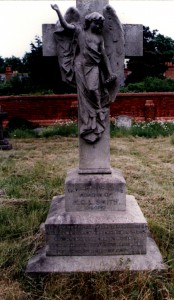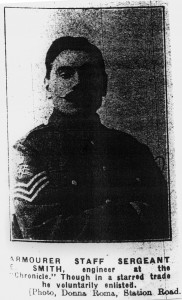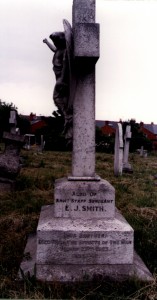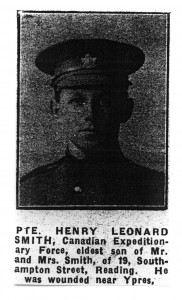Charles Edwin Moores Weller
Private 255768
46th Battalion Canadian Infantry (Saskatchewan)
Division 26
  |
Charles Edwin Moores Weller was the son of Charles Weller, of 127, Queens Road, Reading. He is commemorated on the headstone of the grave of Fanny Briden and Charles Weller. Grave number 8711. Charles was the eldest son of this marriage. The inscription, which is now very feint, states that he was killed in action at Passchendaele on 26th October 1917, aged 37.
The 26th October marked what was officially designated the 2nd Battle of Passchendaele. The action began at 5.40 in the morning. British divisions were either side of the Menin Road. Along the Passchendaele ridge and the Passchendaele to Broodseinde road were the 46th Canadians and the 18th Australian Battalions. They moved forward in the early mist and later steady rain. The Canadians and Australians took there objectives. However, the Canadians paid heavily with 70% casualties and because two different units had been used in the capture of Decline Copse, and each left it to the other unit to consolidate, the Germans were able to mount a successful counter attack and they were not ejected for a further 24 hours.
Charles Weller was first reported missing and his father had many appeals for information published in local papers, it was not until March 1918 that he was confirmed as killed.
Charles Weller’s body was lost and therefore his name was commemorated on the Menin Gate Memorial to the Missing, Panels 18-26-28. His name is listed in the Canadian Book of Remembrance.




